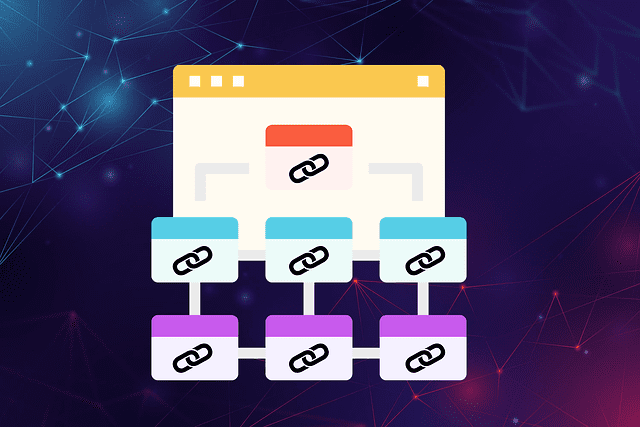Having bad, toxic, and even dead backlinks pointing to your website is such a frustrating situation, but it’s not impossible to deal with.
But before we go further, let’s get this clear:
Bad backlinks are low-quality links from suspicious and spammy websites that are pointing to your SaaS website. But instead of boosting your online relevance, they’re doing just the opposite.
These links may come from private blog networks, link-building campaigns, bulk-buying links for low prices (20 links for $50), spam schemes, and automated link-building activities. While they may give an initial spike, Google and other search engines quickly spot these schemes.

Table of Contents
How Harmful Backlinks Occur?
Bad backlinks may happen in several ways, as we mentioned above. But let’s see how exactly a toxic backlink happens.
Paid-Link Schemes
Activities like buying cheap backlinks from low-quality websites or private blog networks (PBNs) often result in bad backlinks. These schemes exist to manipulate search engine algorithms, and very often, the linking is irrelevant and even manipulative.
Negative SEO
Negative SEO is a pretty harmful practice when competitors or individuals intentionally build harmful backlinks to your website. Their goal is to manipulatively ruin your search engine ranking with automated attacks, comment spam, and irrelevant mentions.
Unintentional Linking
Sometimes, a new and low-domain website may link your content. This is not intentionally bad, as they’re practicing external linking for sure. But if their content is irrelevant, or they link your website too often, it may still negatively affect your website.
Broken Links
Links pointing to non-existent pages on your website are considered broken and can be seen as negative signals by search engines. Regularly checking and fixing broken links helps maintain a healthy backlink profile.
How to Recognize Harmful Backlinks?
Sometimes, you can easily see that the new backlink is irrelevant to your SaaS website. It may come from another website that’s not related to yours in any means. Additionally, the choice of anchor text can be a sign that something is happening too.
To ensure you’re right, utilize a backlink checker or an SEO tool that offers backlink analysis.
If you see that you receive:
- Links from websites with poorly written content
- Unnatural backlink patterns from unknown websites
- Links from websites with zero contextual connection to your niche
You need to come up with a strategy to disallow access to your website.
How Toxic Backlinks Damage Your SEO
Search engine optimization refers to all activities you take to provide quality content that answers the audience’s search intent, and that also aligns with search engines’ quality guidelines.
Toxic backlinks can damage all your efforts since your website can be penalized by Google with both algorithmic and manual penalties.
While Google mostly ignores bad backlinks, it doesn’t mean you should ignore them too. It’s always good to run a backlink audit and disallow these links that harmfully affect your SEO efforts.
It’s important to know that search engines, with Google as a leader, analyze the backlinks to judge your website’s relevance. Harmful backlinks are spammy endorsements, and they send negative signals that your site may be irrelevant, untrustworthy, and low-authority.
Can a Good Backlink Get Bad/Harmful After Some Time?
While it’s not that common for a good backlink to become harmful, there are some situations where it can change. So, you’ll need to pay attention to:
- Website quality you have a backlink on drops over time, becoming spammy, malicious, and even practicing black hat SEO
- Broken links, i.e., links that show to a page that doesn’t exist
- Algorithmic updates that affect the source website, even though it was previously considered good
That’s why you need to monitor the backlink profile, run some bad backlink checkers every now and then, and prioritize disavowing the harmful backlinks to minimize their impact.
What to Do When Someone is Harmfully Backlinking My Website on Purpose?
We want to believe that no person or company is doing that. Unfortunately, everyone can become a target of negative SEO, i.e., harmful backlining. It’s a frustrating experience requiring plenty of actions to be taken in order to protect your SaaS product website.
So, how do we act in this case?
1. Identify the Harmful Backlinks
Use an SEO tool to check the bad backlinks. Leverage the tool you already use and see what happens on your website.
Do you know?
SmartClick has a free backlink checker!
Analyze your website at CheckMyBacklink to spot harmful backlinks and remove them before they damage all your SEO efforts!
You need to highlight the potentially harmful links and analyze them again to spot unusual anchor text, contextual inconsistencies, and harmful behaviors.
2. Gather Evidence
Document what’s happening and keep a record of websites linking to you. Pay attention to the anchor texts and content types you’re mentioned in. Try to spot some patterns to see if someone you know or a competitor stands behind those toxic backlinks pointing to your websites.
3. Take Immediate Action
The first thing you can do is submit disavow requests, instructing Google to ignore those backlinks.
Also, contact the website owners to remove the link to your SaaS website. Sometimes, they may not be aware of the harmful practices happening or can be under some attack.
Surely, you can always stay informed on best off-page SEO practices and even hire an agency or specialist who will manage the situation for you.

What NOT TO DO When Dealing With Bad Backlinks?
Toxic backlinks can indeed damage all your efforts to position yourself as a niche authority and relevant knowledge resource. While Google may ignore some of the spammy links pointing to your website, you can never be sure which ones are ignored.
With all Google algorithm updates and quality improvements, fixing these issues is more important before they permanently harm your site.
So, make sure you never:
- Ignore your backlink profile, thinking that any link is a fine link
- Practice black hat SEO like automated link-building or link farms
- Not taking Google’s notifications seriously
- Focus on quantity over quality (are 20 low-quality links better than three great ones?)
- Be satisfied with irrelevant links and mentions
While these practices may seem naive, the damage can be huge.
Final Thoughts on Spotting and Removing the Bad Backlinks
Google’s algorithms often face updates, which means the relevant practices from a few years ago may be harmful right now. If plenty of backlinks were a sign of an authoritative website with so many trust references, today, it’s the link quality that matters.
So, make sure you audit your backlink profile in order to spot harmful activities, spam links, or expired links that do more harm than good to your business.
Don’t wait, use the backlink tracker for free and boost your online presence.